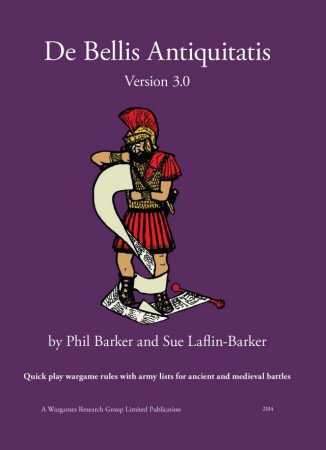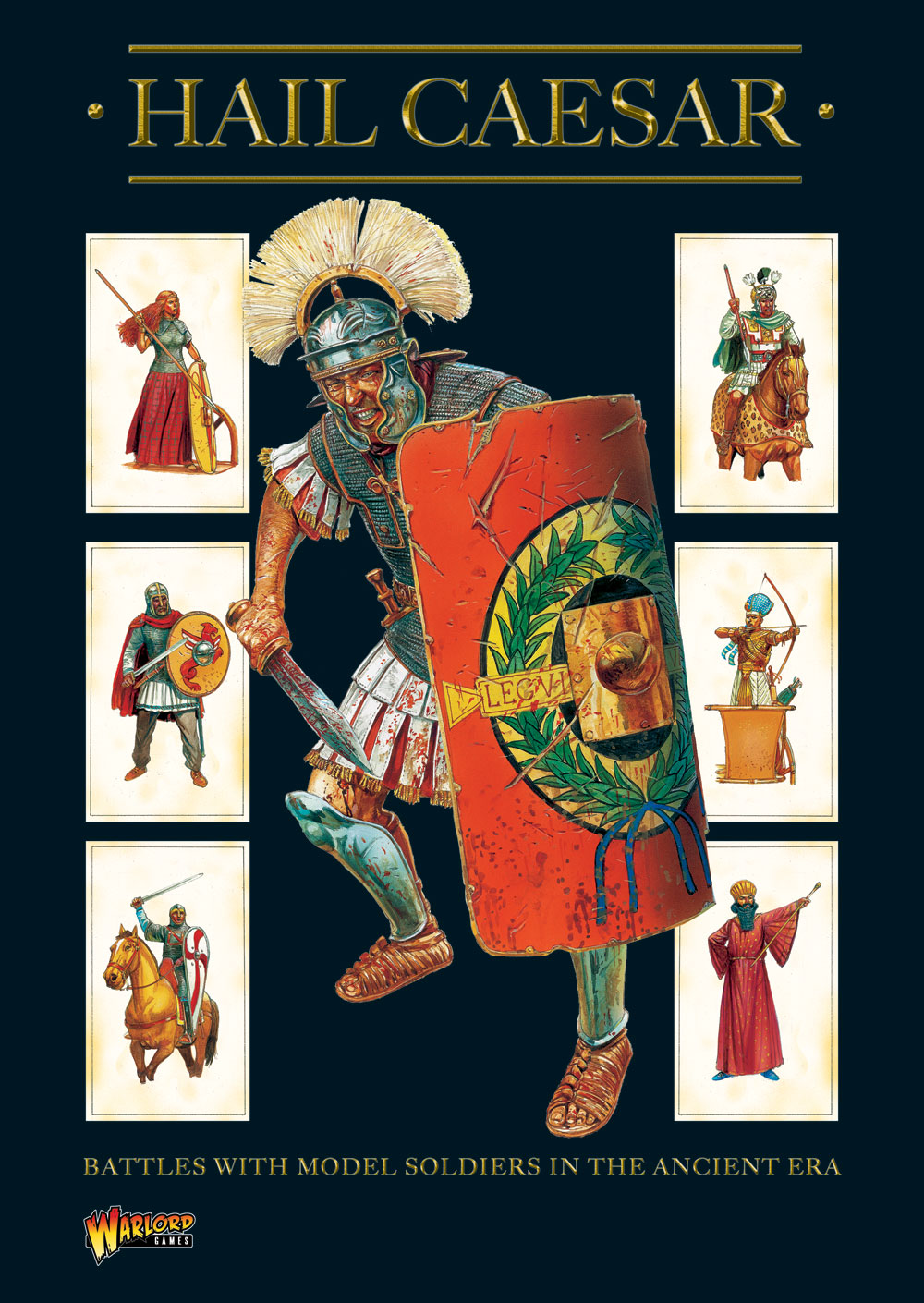 |
| The wargamer needs something more detailed than long rectangles though units are but rectangles from a plan view. |
A challenge peculiar to historical wargaming is deciding on what units and how many one needs in order to play a particular army, battle or campaign.
Reconciling financial constraints with often vague historical details, as well as a practical size for a collection that can be painted and based in a reasonable amount of time, is quite a logistical and research challenge.
Perhaps this is why orders of battle appear so rarely in ancients wargaming, both in print and online, despite the fact that one can't run away from having some 'ORBAT' when one sits down for a game.
The kinds of rulesets one plays with and their representational conceits will also have a practical effects on how figures one needs to acquire and prep. In my case, I have to wrestle with the desire to proportionately represent the look and structure of the armies I collect versus pragmatics of getting a rules-conforming unit on the board.
For example, if each of 10 maniples of hastati was arrayed in a formation 20 files wide and 6 ranks deep, is it practical to use a 28mm scale battle line two models deep by 66 models wide to represent one of the acies of a legion (a 1:3 ratio)? For a typical four legion consular army with each model occupying a width of 20mm, this leads to a gaming table at least 17 feet wide, without factoring in space for the cavalry wings!
Clearly, we need a more practical scaling method for the ordinary game table that is at least six, and at most, eight feet wide.
Systems with a hard limit, such as points-based systems that cap at a certain number of points or have a 'sweet spot' point total, in some ways make things easier by forcing a limit to what you can fit into your budget. Examples would be Warhammer Ancient Battles and similar systems. You assemble your collection within a points total, perhaps allowing for some unit or option swaps.
This comes at a cost of presenting a 'balanced' game that may bear little resemblance to the asymmetries of historical battles.
Unless one is playing scenarios, the diktats of a 'balanced' game or the need to facilitate 'pick up and play' between acquaintances, makes building an army to a points budget a practical endeavour.
De Bellis Antiquitatis removes all this back and forth by removing the research process and capping the number of units at twelve. The army lists are set for you by the designer. They give a flavour of the troop types found in a given historical army, but they demand that one accepts that the tactical performance of all armies can be adequately represented by twelve units and that particular troop types have a scissors-paper-stone dynamic. Collecting DBA armies is, however, a doddle. Given the fixed parameters established by the designer it is a simple matter selecting the figures one likes the best.
I've never been able to warm to the system but I can see the appeal for those on a budget as well as those gadflies who have little attachment to any particular period and treat variety as the spice of life. I have a narrower interest in the historical battles of the Greek, Hellenistic and Punic Wars, with a remote dream of a Sassanian army some day (but with zero interest in the Byzantines that is some ways off), so DBA is far too diffuse to scratch my itch.
However, one can't dismiss the innovations DBA has delivered to historical wargaming. The army lists have proven very useful for giving a snapshot of what an historical army may have been comprised of. The decision taken by the Wargames Research Group to produce system agnostic reference works such as Duncan Head's Armies of the Macedonian and Punic Wars really makes the derived material useful for any system.
Lost Battles on the surface has some similarities to DBA in that it aims for around 20 units per side. It is avowedly more simulationist and puts a lot of effort into representing actual troop numbers and quality based on the historical record or educated guesswork where the former is missing or lacking. It reconciles its rough unit cap with the representation of actual numbers by making each unit of whatever class - heavy/light veteran/levy infantry/cavalry/etc. - equal in fighting power but each unit type represents a different number of troops of a given morale level.
So in a particular battle a single levy light infantry unit may represent 6,000 troops whilst a single veteran heavy infantry unit may only represent 1,500 troops. This is another way of saying that the fighting power of 6,000 levy light infantry is equal to that of 1,500 veteran heavy infantry, with a number of modifiers weighing in to jazz up combat results.
This has the advantage of paring down components to a reasonable number (20) whilst allowing for greater tactical manoeuvre than DBA's twelve pieces. It does make light infantry much more visually thin than they would otherwise appear on the battlefield, but Lost Battles aims to simulate broadly historical battle outcomes rather than aesthetics.
While Lost Battles 'bakes in' troop numbers and quality into a fairly set number of pieces other systems employ some sort of ratio between the number of units and actual troop numbers and pair this with differential fighting power. This is a fairly intuitive approach but it is one which leaves the gamer-collector the challenge of establishing the appropriate ratio for a given battle (it is more challenging to establish one that works across a campaign), and to set out appropriate statistics and abilities for troops of different types and qualities.
Commands & Colors: Ancients takes a scenario approach. Like DBA, the research process is done for you. The number of units one needs to acquire in order to replicate a given army can be simply derived from the block lists in the rulebooks. All you have to do is decide how you want to represent the blocks that make up a unit.
Use removable stands or hit counters, or some other unique basing solution. You could even just use a figure per block (as is done in Samurai Battles). This was the route I initially took. One doesn't even need to get all the units listed as the block maximums factor in outlier scenarios such as the all cavalry battle between Carthaginians and the Romans at Ticinus. Cutting out such outliers pares the project of conversion from blocks to miniatures to a more reasonable level of hubris; one doesn't really need that many cavalry units.
C&C:A handles troop quality a number of ways. The main approach is to assign different numbers of battle dice to each troop type depending on whether they are light, medium, heavy or something in between. The next level is to open or close certain dice results for certain troops with light infantry having the fewest consequential results. Morale is decided by the dice throwing up a Flag result but modified by the presence of leaders or a supporting battle line. Overall army morale is governed by the Banner system. A most subtle system does it build around dice rolls.
Another subtlety is the use of the apparently amorphous 'Auxilia' troop type that hovers between light and medium infantry. It has some of the combat power of medium infantry (e.g. Republican Roman hastati/principes) but with mobility, morale and missile power of light units. This would seem to model something like a peltast or theurophoroi.
However, it appears puzzling when used on a Republican Roman consular army that only had three infantry types (velites (light infantry), hastati/principes (medium), and triarii (heavy)). It is generally accepted that Italian allies in the consular armies were equipped and fought in a similar way to the Roman legions. So why have an Auxilia class in the game?
Auxilia in C&C:A becomes a useful way of varying troop quality between scenarios. In some scenarios the allies or even the Roman hastati may be of poorer quality or morale, so the Auxilia classification allows for some finer simulation of historical factors. Until one figures that out it does present a puzzle for a miniatures conversion project for C&C:A.
To the Strongest! caters for both scenario play as well as points so it is a mix of C&C:A and WAB from that perspective. It's grid movement owes a lot to the author's long engagement with C&C:A. Rick Priestley and John Lambshead have recently criticised such systems as being more boardgame than wargame, but I don't see grid movement as such a deal-breaker. What it sacrifices in terms of 'free form' movement it makes up for in terms of time saved, reduced ambiguity, and less fussing over geometry. As for figuring out an army for a scenario one is left to do one's research on the ORBAT. Arguably, research is one of the joys of the historical wargaming hobby. It's a thinkers game on multiple levels.
Hail Caesar is geared for big battle, multi-player scenario play. If you're not using one of the published campaigns you're pretty left with option of doing your research or playing to a points total for pick up games.
Hail Caesar is geared towards the fairly experienced ancient wargamer that knows their period and offers a broad toolbox for recreating historical scenarios. Both HC and TtS! lend themselves to some ratio of representation between historical troop numbers and what one can field on the tabletop. TtS! makes this quite explicit in its discussion of scale.
So if one is collecting an historical army using HC or TtS! there is the task of figuring out actual, or close to actual, troop numbers and breaking that down into units and figures. One can play around with the footprint of particular troop types. Light infantry are often discounted in terms of model numbers in order to reduce the area they cover, especially with figures spaced in open order, though this may come with a possible diminution of their already limited battlefield impact.
Perhaps the best approach to take is to look at the gaming space one has available and plump for a scale ratio that fills the tabletop battlefield nicely - allowing for cavalry manoeuvre on the wings - and match the combined frontage of one's battle line against that.
Two practical table sizes to consider are the six foot wide table and the eight foot wide one. Both HC and TtS! are 'big game' rules pitched at spectacle and multi-player participation, so eight feet wide seems a reasonable place to start. Depth shouldn't be more than six feet since an adult can usually only comfortably reach three feet from the table edge.
In the next post I will consider an ORBAT for Hannibal's army at the Battle of Trebbia, which represents the first pitched battle of his Italian campaign. This should give a nucleus of units around which to firm up a Hannibalic War project.







No comments:
Post a Comment